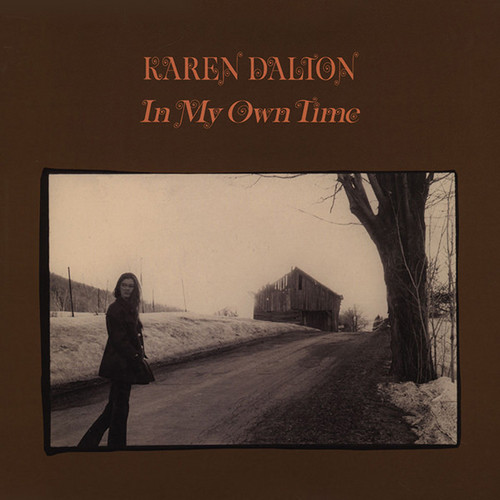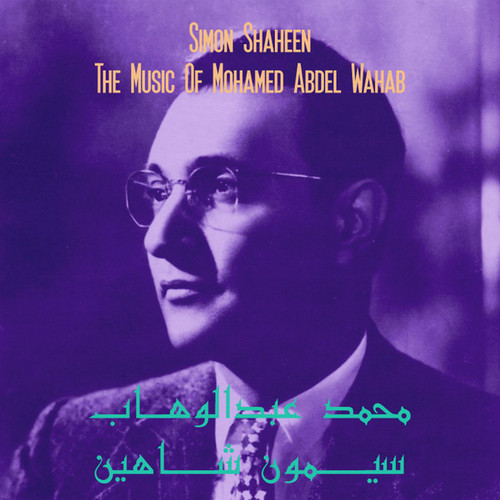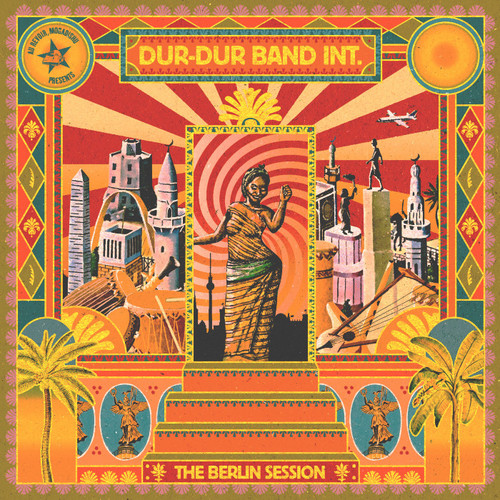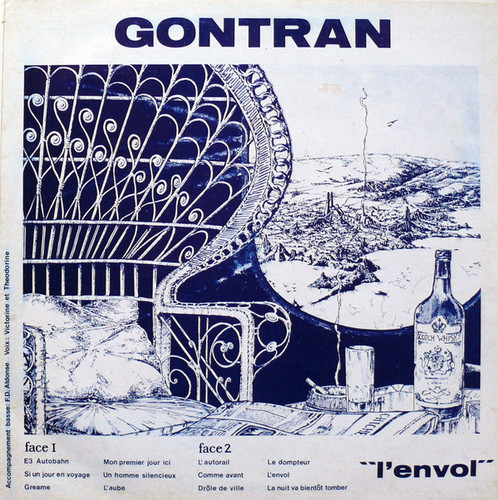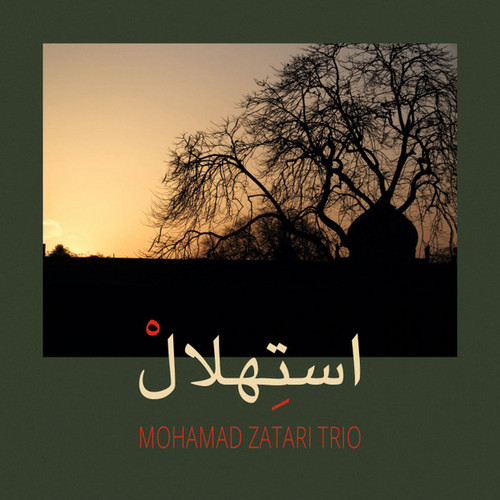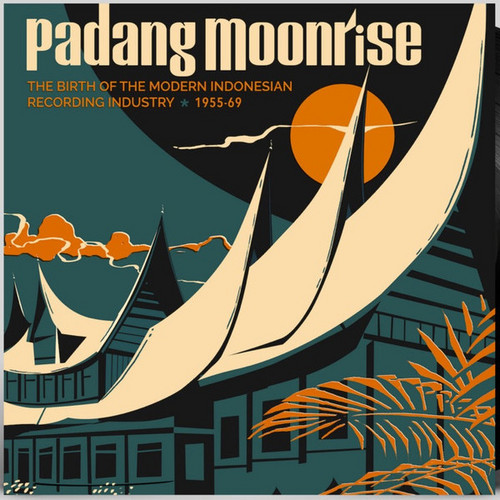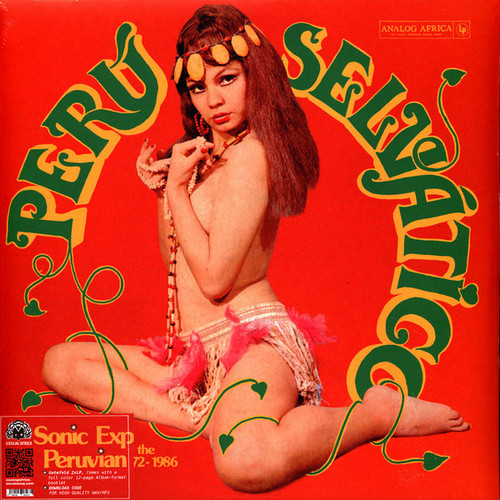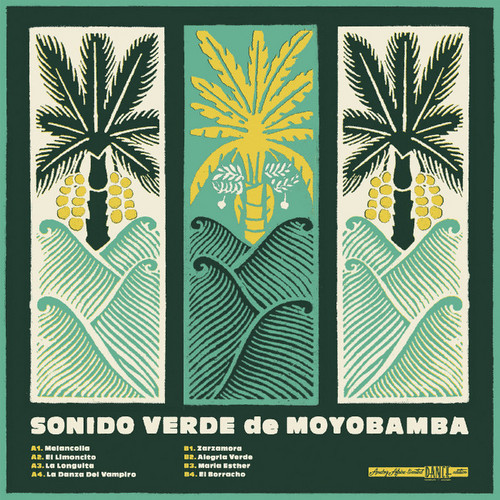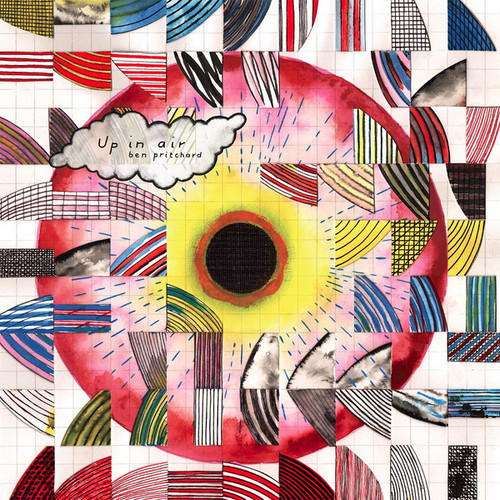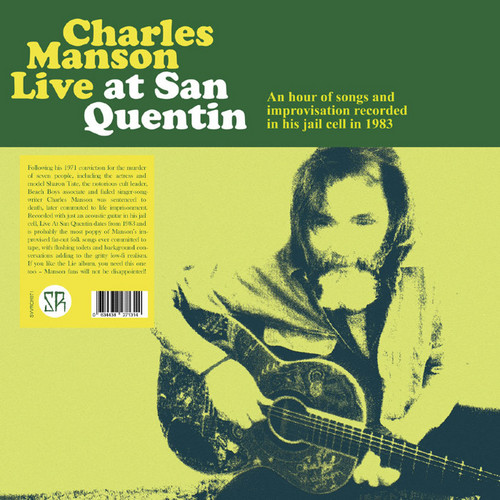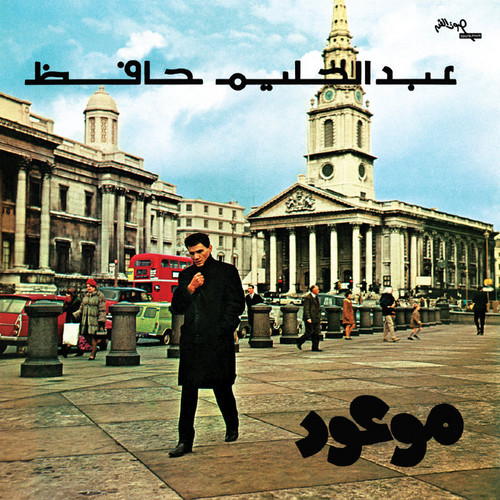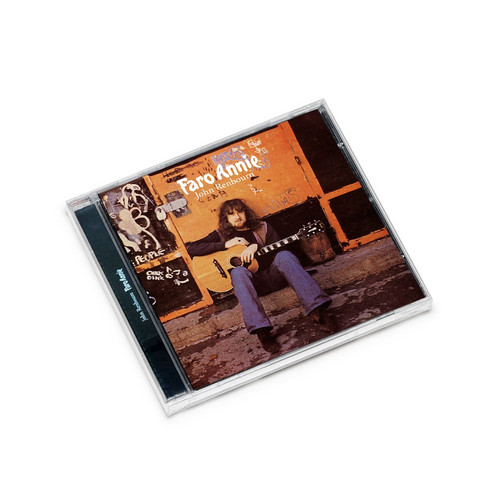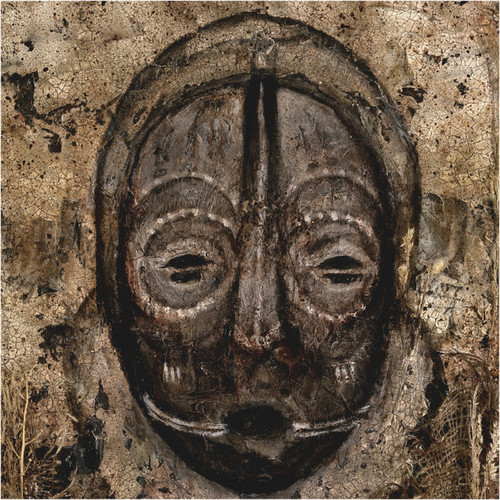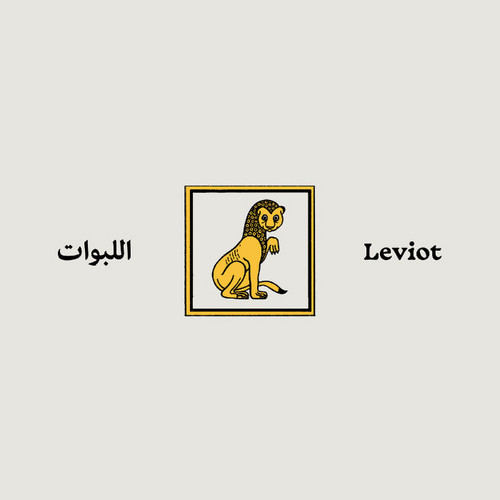Folk /
Där Ska Barnet Vara
New album from Blod recorded during the second half of 2022 by Gustaf Dicksson. Där Ska Barnet Vara is a continuation of the themes explored on Pilgrimssånger and contains nine more songs dealing with faith in different forms, with a strong presence of death. Compared to Pilgrimssånger, the sound is slightly more lo-fi and fucked up and the approach is somewhat looser and more desperate, but here are some of the strongest and most fragile and heartfelt Blod songs to date. Additional players on t…
Shirk
*Edition of 300* Shirk is the new AOR flavored free improvisation solo album by Sam Shalabi featuring Eric Chenaux and Nadah El-Shazly where Synth Pop and Sound Poetry fester. Sam Shalabi is an Egyptian-Canadian composer, improviser and guitarist living between Montreal and Cairo. Starting out during the late 70s punk era, his work has evolved into an experimental synthesis of modern Arabic Music that incorporates free improvisation, traditional Arabic music, noise, classical, text, and jazz. Ot…
In My Own Time
Tip! *50th annyversary deluxe edition* Recorded over a six month period in 1970/71 at Bearsville, In My Own Time was Karen Dalton's only fully planned and realized studio album. The material was carefully selected and crafted for her by producer/musician Harvey Brooks, the Renaissance man of rock-jazz who played bass on Dylan’s Highway 61 Revisited and Miles’ Bitches Brew. It features ten songs that reflected Dalton's incredible ability to break just about anybodys heart – from her spectral evoc…
Ghost Notes From The Stone Vessel
This album is an intimate and historical dive into the work of Laurence Vanay. The titles on this album were carefully chosen by her daughter, Marine Thibault, in order to help us rediscover the sensitive repertoire of a little-known artist who was nevertheless at the forefront of her era.
The Music Of Mohamed Abdel Wahab
Tip! Reissue of the oud / viola virtuoso Simon Shaheen’s interpretations of pieces by one of the Middle East`s most important 20th Century composers, Mohamed Abdel Wahab. Produced by Bil Laswell, remastered for vinyl at D&M Berlin. Mohamed Abdel Wahab (1902-1991) was „a giant in the world of Middle Eastern entertainment” (Al Jadid Magazine) - as singer, actor and composer – and is commonly considered “the father of modern Egyptian song”. After a visit to Paris, he revolutionized the film industr…
The Berlin Session
Tears are in the eyes of Xabiib Sharaabi, nicknamed the Somali King of Pop when he entered the stage of Berlin’s HKW. It is a mix of nostalghia, pain and joy. Like many Somalis he had been deprived overnight of both glamour and friends, the war in his homeland had sent him into exile. The glamorous discos and beachfront stages Mogadishu had once been famous for, had disappeared as the city was bombed to the ground. The King of Somali pop found himself stranded in Sweden, others like the members …
L'Envol
*In process of stocking. 300 copies limited edition* In his youth days, Gontran lived on the road. He describes himself as a member of the alternative hippie generation, not of those who claimed wanted to change the world, but of those who actually took an alternate way of living. He travelled, took any jobs available to make some money to live wherever he was, and wrote beautiful songs accompaining himself on guitar. From time to time, when the stars aligned, when there was the chance, he would…
Istehlal
Zehra is proud to present the debut album Istehlal by the Mohamad Zatari Trio, consisting of musicians from Syria, Iran and India. The trio merges traditional Middle Eastern sounds with contemporary vibes incl. interpretations of Hossein Alizadeh and Riad Al-Sunbati classics.
Padang Moonrise (The Birth Of The Modern Indonesian Recording Industry ⋆ 1955-69)
Tip! Padang Moonrise is the story of modern Indonesian music that emerged underneath the volcanoes of Java and Sumatra. Java, the most populous island in the archipelago of over 17,000 islands and 1300 distinct ethnic groups, and its capital city Jakarta, was where most of the post-colonial national identity, politics, administration and music production was centred.
Traditional songs from Java, Sumatra, Bali and beyond were re-imagined by a small group of state-sponsored musicians that also com…
Perú Selvático - Sonic Expedition Into The Peruvian Amazon 1972-1986
Tip! *In process of stocking* Less than a hundred miles inland from the capital city of Lima lies the great Peruvian jungle, an untamed land of impenetrable forests and endless winding rivers. In its isolated cities, cut off from the fashions of the capital, a unique style of music began to develop, inspired equally by the sounds of the surrounding forests, the roll of the mighty Amazon and Ucayali Rivers, and the rhythms of cumbia picked up from distant stations on transistor radios. With the a…
Sonido Verde de Moyobamba
Formed in 1980 by guitar prodigy Leonardo Vela Rodriguez, Sonido Verde de Moyobamba created some of the hardest, craziest Cumbia to emerge from the Peruvian jungle. With distorted, surf-addled guitar facing off against lysergic organ and hyperactive tropical rhythms, Sonido Verde conjured the organic sound of the dense forests surrounding their hometown while riding their dance-party grooves to dizzying psychedelic peaks.
Compiled by Analog Africa, Sonido Verde de Moyobamba presents eight ultra-…
Up In Air
"After a near decade of solo and collaborative projects, Up in Air is Ben Pritchard's most confident foray into songwriting yet, nestling lopsided experimentation into a bed of lowslung blues and reflective folk." Featuring collaborators Sholto Dobie on self-built organs, and bassist Otto Willberg.
The Hillbillies In Hell Omnibus: An Encyclopaedic Compendium Of Hades' Greatest Hayseed Hits (1954-1974)
The Vaults of Hell open once again… This Diabolic collection assembles dusty favourites from the acclaimed and out-of-print Hillbillies In Hell series with previously unsighted subterranean jewels in an all-new Necrotic Experience. Witness this daemonic carousel of broken Nashville delights – Brazen Voodoo Rituals, Satanic Trysts, Apocalyptic Cataclysms, Premature Burials and Beastly Jousts. Sometimes grim, sometimes beautiful – this extraordinary anthology of knowns and unknowns, battered Opry …
The Now Sound Of Nashville: Psychedelic Gestures In The Country Music Experience (1966-1973)
From the people who brought you Hillbillies In Hell… Sitars, Fuzz Guitars and LSD sugar cubes…a Lysergic collection of Forgotten Nashville. Hayseed Moog Hoedowns, Psyche Teen Meltdowns and Wild Weed Compounds. All cut on Music Row by serious Nashville players in comfortable suits. Eight Miles Higher than a Haystack – you’ll witness melting, Dali-esque cakes, Apocalyptic Flower Power driven by banjos and fiddles, Floating Bongo Lullabies and Crazed Nashville Knock-Off Ersatz Exploitations.
Someth…
Live At San Quentin
Following his 1971 conviction for the murder of seven people, including the actress and model Sharon Tate, the notorious cult leader, Beach Boys associate and failed singer-songwriter Charles Manson was sentenced to death, later commuted to life imprisonment. Recorded with just an acoustic guitar in his jail cell, Live At San Quentin dates from 1983 and is probably the most poppy of Manson’s improvised far-out folk songs ever committed to tape, with flushing toilets and background conversations …
Mawood
All-time arabic music classic recorded in 1971 by egyptian music titan Abdel Halim Hafez. Composed by Baligh Hamdi and featuring Omar Khorshid, the album is reissued on vinyl for the first time in decades, with remastered audio.
Fireside Stories
*In process of stocking* Anti-counter culture loner folk from a teenage attic in the heart of rural Northern hippiedom. "This is music that can confidently hold its own with pioneers such as Davey Graham, Michael Chapman, Bert Jansch and Jackson C Frank, as influenced by jazz, blues and steel guitar as any of the old songbook classics from ancient Albion.” - Benjamin Myers
Today the valley town of Hebden Bridge in West Yorkshire is world-renowned as something of a bohemian backwater. It wasn’t l…
Faro Annie
*2022 stock* This is John Renbourn’s fifth and most blues influenced album, backed by the Pentangle rhythm section of Terry Cox and Danny Thompson. The singer/guitarist often takes a folk-rock approach, and often investigates American folk songs, on ‘Faro Annie’, beginning with the traditional “White House Blues”, a song about the 1901 assassination of President William McKinley. Next is “Buffalo Skinners” another traditional piece made famous by Woody Guthrie. Then there is “Country Blues”, a p…
A Mournful Kingdom of Sand
*In process of stocking* The cabalistic duo Ak’chamel strikes again with a second record called A Mournful Kingdom of Sand. Following the publicly and critically acclaimed The Totemist (AKU1023) released in 2020, this album sucks the listener into another esoteric journey which - according to the band - is a perfect soundtrack for the desertification of our world. Ak’chamel, The Giver of Illness is an enigmatic duo from a border state. Fourth World Post-Colonial Cultural Cannibalists Circumcisin…
Sharav
*In process of stocking* Akuphone is proud to present the Jerusalem-based improvisational trio Leviot and its hypnotizing debut album. Leviot (Hebrew for “Lionesses”) is the brainchild of the multifaceted musician and composer Yael Lavie. She is accompanied by classically trained percussionist and music teacher Cnaan Canetti, and synth enthusiast Yishay Seroussi. The project is a result of Lavie’s explorations beyond the restraints of classical kanun and her fascination for electronic sounds and…


